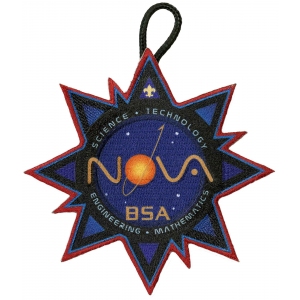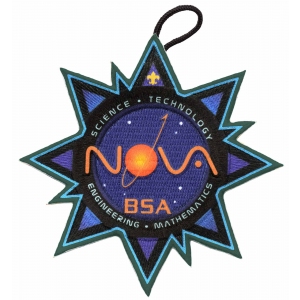Deconstruct and Analyze: Mechanical Designs
This activity can be done individually or in a small group. Your task is to take apart a bicycle (or other suitably complex mechanical device; see the note below), analyze the components, and describe how the components work (both separately and together).
Part 1: Preplanning and Set-Up
- Do the following:
- With your mentor's assistance, choose an unwanted older bicycle - or any other complex mechanical device - perhaps not completely in working order, that is a bit beyond what you feel comfortable dismantling.
- Find a location for the project where you can take things apart, leave the pieces undisturbed, and come back another time.
- Determine and gather the necessary tools. You are encouraged to find resources to help you with the deconstruction, such as written instructions or a repair specialist willing to volunteer his/her time. (The specialist cannot touch the object or the parts, or handle the tools during dismantling. You and any fellow youth must do all of the dismantling.)
Part 2: Deconstruction, Analysis, and Report
This next phase involves deconstructing the device. Take pictures as you work, and make notes of what is happening in each picture.
- Determine the following:
- The major components of the bicycle
- What parts make up each component
- How the components work together
- The mechanical or electronic advantages that a minimum of three parts or circuits convey
It is not crucial for the object you deconstruct to be a bicycle. Any mechanical device, machine, or tool will do, as long as it is suitably complex for your abilities and knowledge and is approved by your mentor. Examples include but are not limited to manual typewriters, old clocks, old sewing machines, and so on.
If you wish to deconstruct something that is electronic in nature (rather than just mechanical), then you will need to learn about additional safety protocols that must be observed while deconstructing electronics. Your mentor may suggest and help to secure the help of a qualified electronics expert for those projects. You must demonstrate to your mentor that you know and understand these additional safety protocols prior to beginning your deconstruction.
Whatever you choose to deconstruct, you must adapt the questions above to suit the object you are deconstructing and address those questions in your report.
- Discuss the following with your mentor:
- What might cause a failure in one of the components
- The kinds of failures that can be fixed if you are using the device away from home (for example, if you are out mountain biking)
- The basic elements of keeping the device well maintained
- Considering the intended owner/user and uses of this device, discuss improvements to the design that could be made.
- Create a report that communicates your understanding of the experience
and addresses the following points.
- Document the deconstruction process, your analysis of the components, and how they work together
- Document your analysis of failure possibilities plus maintenance requirements, and what these suggest about design improvements
Resources
- Bryan Bergeron. Teardowns: Learn How Electronics Work by Taking Them Apart. McGraw-Hill/TAB Electronics, 2010.
- Naval Education and Training Program. Basic Machines and How They Work. Dover Publications, 1997.
Build and Test: High Performance Paper Gliders
This activity can be done individually, but works much better with at least two people. Your task is to measure how differences in design affect the flight characteristics of a glider. You will accomplish this by building and testing some high-performance paper gliders. These gliders use a laminated construction method that helps simulate a real glider much more closely than a simple folded piece of paper.
Part 1: Background Research, Baseline Design Selection, and Test
- Research and discuss the following with your mentor:
- The fundamental parts of a glider
- The basic elements of the physics of stable flight
- Choose a glider design from a kit or plans. (You do not need to design
the glider yourself.) Then do the following:
- Identify one quantitative characteristic to test, such as flight distance, flight time, average flight speed, and so on. Then identify one qualitative characteristic to test, such as presence of a stall, dive, flip, left turn, right turn, and so on.
- Hypothesize how variations in one part of the glider, such as wing size, fuselage length, center of gravity, flap size, and so on, might influence these characteristics of the glider's performance.
- Build four high-performance gliders, identical except for variations in the relevant glider part.
- Establish a consistent method to measure each characteristic during a test flight. Then find a way to launch the gliders in a consistent manner so that they are launched at the same speed every time. You should perform test flights with each model five to six times to account for variations in flight performance. Try to keep the conditions of each test flight the same as for all the other test flights. Keep records of the results for each test flight.
Part 2: Analyze and Report
Present to your mentor your recorded data in a tabular format as well as a graphical format. (You may use Excel if you wish.) Then do the following:
- Evaluate the data and determine how the variations in the tested glider part influenced the flight characteristics you observed. Based on the data you gathered, predict how the glider would perform relative to the flight characteristics you observed if you were to build a glider with another variation in the same glider part.
- Suggest an ideal design of your tested glider part that would maximize the glider's performance relative to the flight characteristics you observed and explain your reasoning for this design.
- Create a report that describes your glider, the flight tests, the flight data, and your conclusions. Include the procedures you followed to ensure consistent test conditions.
- Share the flight records and data you have gathered with your mentor. Discuss what you have learned.
Source: The idea for this activity is based on the work of Andrew Olson, Ph.D., Science Buddies, What Makes a Good Aerodynamic Design? Test Your Ideas with High-Performance Paper Gliders. Visit http://www.sciencebuddies.org/ science-fair-projects/project_ideas/Aero_p009.shtml .
Resources
- Science 85 Magazine. The Paper Airplane Book: The Official Book of the Second Great International Paper Airplane Contest (best book for laminated paper techniques). Science 85 Magazine, 1985.
- Hubert Smith. The Illustrated Guide to Aerodynamics (for background research). McGraw-Hill Professional, 1991.
- AG Industries WhiteWings
Website: http://www.whitewings.com (glider kits) - NASA Beginner's Guide to Aeronautics
Website: http://www.grc.nasa.gov/WWW/K-12/airplane/guided.htm (For background research, look at the gliders section.) - The Online Paper Airplane Museum
Website: http://www.theonlinepaperairplanemuseum.com (free glider plans) - Zovirl Industries
Website: http://www.zovirl.com (For glider plans, click on the Paper Airplanes tag.)
Design and Redesign: Egg Drop Contest
This is a group activity and requires at least two youth. Your task is to design a container in which to place a raw egg, so that when the container with the egg is dropped, the egg survives the impact without breaking.
Part 1: Research, Design, and Contest Set-Up
Research and describe to your mentor:
- The physical forces affecting the outcome of an egg drop test
- Desirable characteristics of container materials
- Rules for other egg drop contests. (With your parent's or guardian's permission, search online.)
- As a group, come to a consensus about the constraints and rules for
your egg drop contest. Adopt, adapt, or make up your own rules. You might
want to break into divisions, each with its own rules. (Youth with stronger
STEM backgrounds should adopt more challenging constraints and rules.) Here
are some guidelines. You must:
- Agree on constraints that the egg container must meet, such as dimensions, weight, allowable materials, disallowed elements, and so on.
- Agree on rules to ensure fairness, such as judging decisions, conditions for elimination, scoring system, how to win, and so on. You may wish to have several different ways to win.
- Communicate the constraints and competition rules to all participants.
- Design and build your container.
- Have fun - conduct the contest!
Part 2: Analysis, Redesign, and Report
Analyze how your container performed, and discuss with your mentor your design strategy and how well the container you designed performed. Then do the following:
- Given your container's performance, your knowledge of the physical forces acting on it during a test drop, and your observations of other participants' containers and results, redesign your container. Your redesigned container should still fit within the contest constraints but offer improved performance.
- Consider whether you would alter the constraints, how, and why. Create
a report that communicates your understanding of the experience and addresses
the following points.
- Describe your original egg container, your original design strategy, and your analysis of its performance.
- Describe your redesigned container and the reasoning that led to your new model.
Resources
- 3-Egg Drop Challenge
Website: http://teachertech.rice.edu/Participants/pschweig/eggdrop.html (Look here for rules that offer a more challenging contest.) - Winston-Salem/Forsythe County Egg Drop Competition
Website: http://wsfceggdrop.com (This site includes a nice set of rules that utilizes a mathematical formula to determine a winner, based on several design and performance factors.)
Source: https://www.scouting.org/stem-nova-awards/awards/venturer-supernova-topics/









